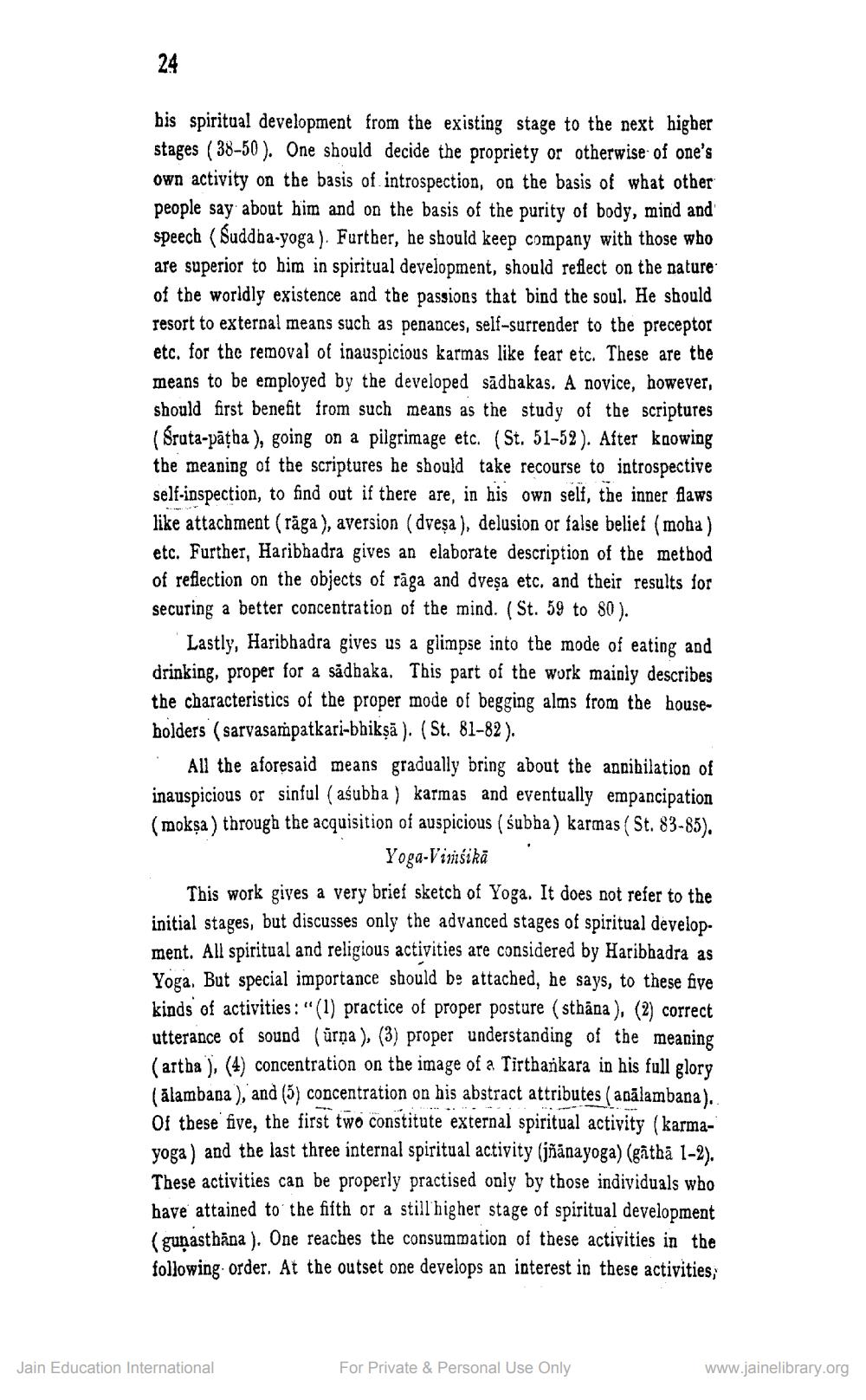________________
24
his spiritual development from the existing stage to the next higher stages (38-50). One should decide the propriety or otherwise of one's own activity on the basis of introspection, on the basis of what other people say about him and on the basis of the purity of body, mind and speech (Suddha-yoga). Further, he should keep company with those who are superior to him in spiritual development, should reflect on the nature of the worldly existence and the passions that bind the soul. He should resort to external means such as penances, self-surrender to the preceptor etc. for the removal of inauspicious karmas like fear etc. These are the means to be employed by the developed sadhakas. A novice, however, should first benefit from such means as the study of the scriptures (Śruta-pāṭha), going on a pilgrimage etc. (St. 51-52). After knowing the meaning of the scriptures he should take recourse to introspective self-inspection, to find out if there are, in his own self, the inner flaws like attachment (rāga), aversion (dveṣa), delusion or false belief (moha) etc. Further, Haribhadra gives an elaborate description of the method of reflection on the objects of raga and dveṣa etc. and their results for securing a better concentration of the mind. (St. 59 to 80).
Lastly, Haribhadra gives us a glimpse into the mode of eating and drinking, proper for a sadhaka. This part of the work mainly describes the characteristics of the proper mode of begging alms from the householders (sarvasampatkari-bhikṣā). (St. 81-82).
All the aforesaid means gradually bring about the annihilation of inauspicious or sinful (aśubha) karmas and eventually empancipation (mokṣa) through the acquisition of auspicious (subha) karmas (St. 83-85). Yoga-Vimśika
This work gives a very brief sketch of Yoga. It does not refer to the initial stages, but discusses only the advanced stages of spiritual development. All spiritual and religious activities are considered by Haribhadra as Yoga. But special importance should be attached, he says, to these five kinds of activities: "(1) practice of proper posture (sthana), (2) correct utterance of sound (urna), (3) proper understanding of the meaning (artha), (4) concentration on the image of a Tirthankara in his full glory (ālambana), and (5) concentration on his abstract attributes (anālambana).. Of these five, the first two constitute external spiritual activity (karmayoga) and the last three internal spiritual activity (jñānayoga) (gāthā 1-2). These activities can be properly practised only by those individuals who have attained to the fifth or a still higher stage of spiritual development (gunasthana). One reaches the consummation of these activities in the following order. At the outset one develops an interest in these activities,
Jain Education International
For Private & Personal Use Only
www.jainelibrary.org




